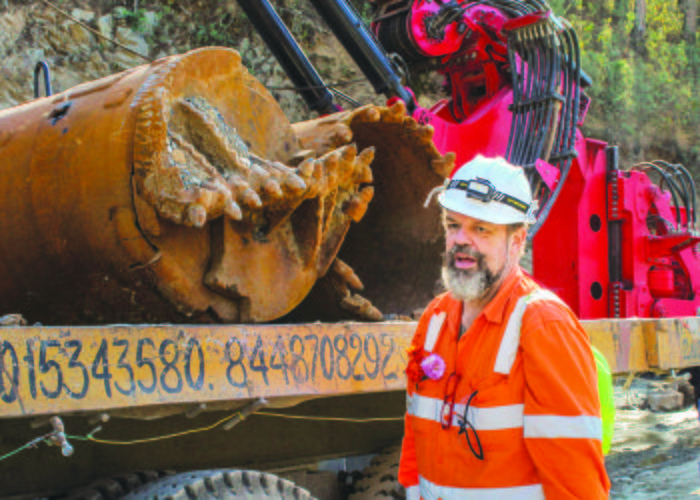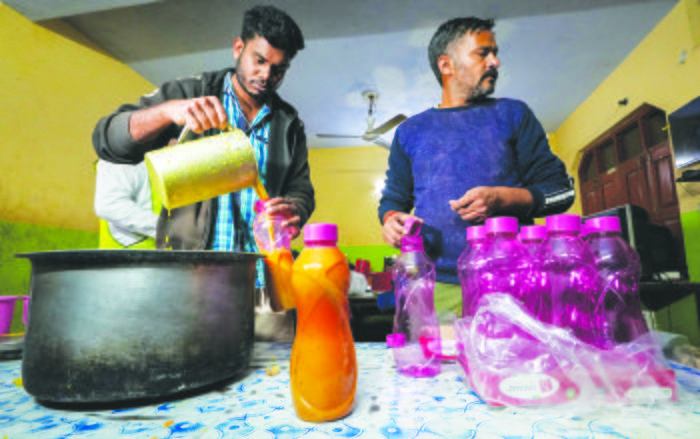20 Meters Covered, 66 to Go!"
Uttarakhand Tunnel Collapse | Explained: Why Rescue Op Kept Getting Stuck
Himalayan quandary: Lessons from UttarakhandTunnel collapse
It can’t be business as usual, it is critical to draw lessons from the collapse of an under-construction tunnel in Uttarakhand
The multi-agency rescue effort to extricate 41 workers trapped inside the Silkyara-Barkot tunnel serves as a stark wake-up call for the authorities and the planners tasked with constructing tunnels and roads in the formidable yet unstable mountains of the Himalayas.
Pilgrimage project
- The Silkyara-Barkot tunnel holds a significant role in the Char Dham all-weather road, a prominent initiative linking several Hindu pilgrimage site
- This tunnel, inclusive of an escape passage and approaches, spans the Dharasu-Yamunotri section falling along NH-134.
- In February 2018, the Cabinet Committee on Economic Affairs, chaired by Prime Minister Narendra Modi, granted approval for construction of a 4.5-km-long two-lane bi-directional Silkyara bend-Barkot tunnel.
- Implemented under the Engineering, Procurement and Construction mode, the project secured funding through the NH (O) scheme of the Ministry of Road Transport and Highways and is an integral part of the ambitious Char Dham plan with a civil construction cost estimated at Rs 1,119.69 crore.
- The total project cost, encompassing expenses related to land acquisition and rehabilitation, pre-construction activities, and a four-year maintenance and operation plan for the tunnel, amounted to Rs 1,383.78 crore.
- Upon completion, the project is set to reduce the travel distance from Dharasu to Yamunotri by 20 km, thereby cutting travel time by about an hour.
- The proposed tunnel will contribute to saving a significant number of trees, which would have otherwise been required to be removed for the road improvement covering a stretch of 25.6 km if the original alignment had been followed.
As Uttarakhand looks forward to the construction of several such projects in the coming years, the incident raises concerns about the potential risks to human lives, particularly in the event of an earthquake during tunnel construction.
 Uttarakhand Chief Minister Pushkar Singh Dhami talks to trapped workers. Also seen is Union Minister VK Singh.
Uttarakhand Chief Minister Pushkar Singh Dhami talks to trapped workers. Also seen is Union Minister VK Singh.Geologically, the Himalayas present a challenging terrain marked by faults and weak shear zones (a thin zone within the earth’s crust that has been strongly deformed). Experts caution that the construction of tunnels in this region necessitates meticulous attention to safety measures aligned with the unique geology.

There is a resounding call for setting up of a high-level committee to conduct a comprehensive audit. The insights gleaned could prove to be invaluable in averting similar incidents in future.
From tunnelling experts to geologists, all have raised questions over the methods adopted by the construction company which was to complete half the portion of the 4.5-km-long tunnel by the end of the year. A portal of muck collapsed 200 metres inside the mouth from the Silkyara side of the tunnel around 6 am on November 12, just two hours before the 41 workers were planning to come out to end their shift for a day off to celebrate Diwali.

Many workers at the project site, especially those operating heavy machines inside the tunnel, have been stationed here for more than four years since the work started. They say this collapse was not the first. Rubble had fallen earlier too at the same location, which is considered the weak zone of this tunnel.
That incident, though, was not taken seriously, they claim, and the workers were deputed to complete the task.

One of the workers, Vikas, emphasises the need for heightened safety measures and criticises the absence of any support mechanism at the collapse site. “This incident has opened the eyes of the authorities. Luckily, nobody was working at the spot where the muck collapsed, creating a heap of rubble of up to 60 metres. Imagine if the muck had fallen on the labourers, or on the commuters when this tunnel had been opened for public use,” he adds.
Experts point to the lack of critical safety protocols. According to them, the company not only failed to adhere to the norms mandating the setting up of a rescue tunnel or hume-pipe for tunnels exceeding 3 km in length, but also disregarded the fragile geology of the Himalayas.
Prof YP Sundriyal, former head of the Department of Geology at Central University of Srinagar, Garhwal, attributes the tunnel collapse to extreme carelessness on the part of the construction company. “If we are going for any construction in the Himalayas, we have to take extra care, but the construction company did not provide the required support. The tunnel is being built under a hill which has a height of around 400 metres,” he said, adding that there is a strong possibility that they ignored the geological reports before starting construction.
Advising the government to set up a committee and conduct a thorough study for the safety of several upcoming projects, he said, “No doubt, tunnels make travel easier, but they are also dangerous if not built as per the norms and a proper study of geology of the area. We need to draw lessons from these incidents.”
According to geologist Prof SP Sati, “Himalayan fragility and Srinagar Thrust (ST) is a major thrust fault in the Garhwal-Srinagar area. It is marked by a sudden change in the elevation of the topography in the Silkakhal road section. There was a prominent display of shear zone at this site. It was ignored instead of taking extraordinary safety measures.” There was also a strong possibility, he adds, that explosives could have triggered the collapse.
“Even the insertion of a hume-pipe is mandatory, along with the provision for a bypass which could be used for muck evacuation and emergency rescue of workers, if required,” says Prof Sati. “There was no readiness or preparation. They were aware that this is a shear zone and muck had fallen earlier too, but no protective measures were taken.”
Experts say that building tunnels, even in shear zones, is not impossible but there should be proper guidelines and monitoring by geologists. The safety of this tunnel, it is being pointed out, will always remain in question and even vertical drilling, if done, will weaken the strength of this tunnel. They suggest that there is a need to respect the mountains.
Arnold Dix, an international tunnelling expert from Australia, who has been called by the Union government to assist in the rescue efforts, says, “Going by this entire exercise, it seems this mountain is in trouble from day one, as it is extremely difficult to work here, especially from the Silkyara side.”
The engineering required in construction of such type of tunnels in the Himalayas is really difficult and that is why the rescue operation is also very difficult, he says. “The same reason which led to the tunnel collapse also created problems in the rescue.”
On whether tunnelling through such mountains was a wise decision, he says, “Tunnelling through such rocks is fine, but we need to follow certain norms and it should be done keeping the fragile geology of the Himalayas in mind.”
Dix, however, says that there wasn’t any fault in the rescue operation as it’s being carried out under the guidance of top experts.
Similarly, Lt Gen Syed Ata Hasnain (retd), a member of the National Disaster Management Authority, in a press briefing, maintained that the Himalayan geology was the biggest challenge in the rescue operation. “In this situation, both the trapped workers and the rescue team are at risk,” he said.
In response to the incident, the Uttarakhand government has established an expert committee to investigate the causes of the collapse. The committee comprises experts from the Uttarakhand Landslide Mitigation and Management Centre; the Wadia Institute of Himalayan Geology, Dehradun; the Indian Institute of Technology, Roorkee; the Central Building Research Institute (CBRI), Roorkee, and the Geological Survey of India.
Independent experts who are keeping an eye on the developments have already suggested that the Himalayas are a very fragile range and any construction in such terrain needs to be done with extra care and planning. There is no substitute for relying on expert studies and constantly observing geological patterns.
A former adviser to the Prime Minister’s Office, Bhaskar Khulbe, who is monitoring the entire Char Dham project in Uttarakhand, says, “We are using the best technology and experts to build these tunnels and highways and several roads have already been completed. We are, of course, examining what went wrong here.”
This project is expected to generate jobs and boost the income of the people living in vicinity, but not many are enthused. “This project will open the windows of earnings for several people, but it will also leave hundreds jobless as there will be no movement of traffic on the 20-km stretch from the hills from Silkyara to Barkot,” says a local tea vendor, Kishan Singh.
unheralded workforce
Only two of the trapped workers hail from Uttarakhand. Fifteen are from Jharkhand, eight from Uttar Pradesh, five each from Bihar and Odisha, three from West Bengal, and two from Assam. One worker hails from Himachal Pradesh.
Predominantly heavy machine operators, most of these workers have been at the project site for nearly four years. They fall into two salary brackets, with skilled workers earning Rs 24,000 per month and non-skilled workers Rs 18,000. All of them play crucial roles as helpers and labourers supporting the technical teams.
Working strenuous 12-hour shifts throughout the week, they allow themselves a two-day break each month. Tragically, the tunnel collapse incident occurred just as they were concluding their night shift, scheduled to end at 8 am. However, a colossal 60-metre rubble barricade stood between them and their families, disrupting their plans for celebrating Diwali and Chhath Puja.
Rajni, a mother of four, including three daughters, altered her Chhath Puja celebration plans as she embarked on a 1,675-km journey from Bihar to Silkyara in anticipation of news about her husband, Varindra Kisku, one of the trapped labourers. While expressing concern about the delayed initial response, Varindra’s brother, Devebhra Kisku, an experienced tunnel worker himself, acknowledged the efficacy of the ongoing rescue efforts.
Visiting the tunnel site has unveiled the arduous realities faced by their loved ones in this perilous profession. Sunita, visiting her trapped brother-in-law from Bihar, voiced newfound empathy, acknowledging the inherent risks in this work.
Despite the authorities asserting that the trapped workers are in good health, concerns persist among families. “We never knew how risky their work is. Now we have got a sense of the extreme situations they endure for the sake of their families,” she adds.

No comments:
Post a Comment